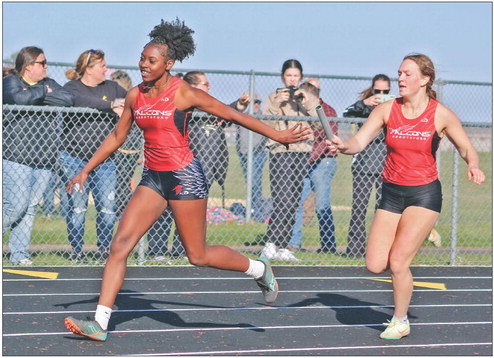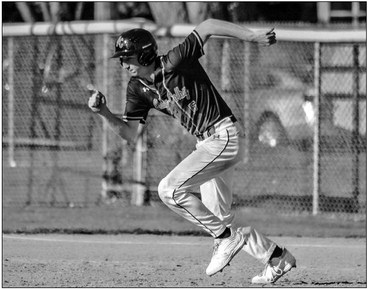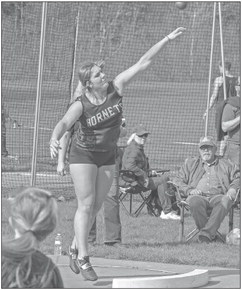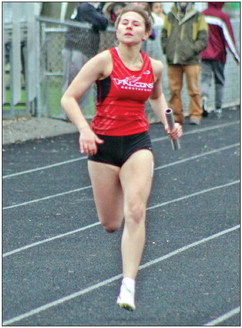Bus drivers take lead on COVID control
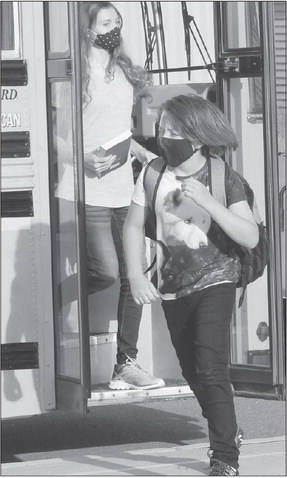

As students returned to class Tuesday morning for the first time since mid-March, there were multiple precautions in place to keep them safe from COVID-19. The first place they encountered such measures was on the big yellow bus that picked many of them up at the end of their driveway.
Those buses, as Burnett Bus Service owner Joe Burnett sees it, have to be the first line of defense in keeping the coronavirus out of the school systems so classes can continue and students do not once again have to be kept at home for their and their families’ health.
If drivers can follow new protocols and identify a possibly ill child, that student can be kept from mingling with others and starting a chain-reaction spread of the virus. It’s a big task, and a big responsibility but Burnett said his company has spent all summer preparing for it.
Burnett held his usual driver meeting recently, with the 20 regular route drivers plus substitutes that he employs for the Spencer, Colby and Abbotsford districts going over the policies like they always do. This year was not the same.
“We spent nearly two hours talking just about what our protocols would be for COVID-19,” Burnett said.
Drivers will take on a large role in the plan, as they will be taking each child’s temperature as they board buses in the morning, requiring all riders to wear face masks, and enforcing/ documenting seating charts. Those new rules, Burnett said, have been in development for weeks as he and his staff have sifted through mountains of COVID-19 information to decide what needs to be done.
Burnett called it “our largest challenge” to dig and learn what the coronavirus really poses as a threat.
“There is so much information out there that you truly don’t know what to believe,” he said. “What part of this is actually real and are the facts there to support it?”
From that process, Burnett Bus Service has implemented several new policies. Among them will be strict adherence to a seating chart for all riders, plus keeping a detailed daily log of who sat where and when. That, he said, will be crucial to quarantining children who might be exposed to COVID.
Burnett drivers have used seating charts for many years, but have not specifically tracked who rode each morning or afternoon. They will this year.
“We’re going to literally do attendance on every AM and PM bus route,” he said. “One of our greatest concerns is contact tracing, verifying who is on the bus and when. We understand the critical importance of that information. We have done seating charts on the buses for many decades. This takes on new life.”
Other protocols such as having family members sit together, keeping distance between riders, etc., will be practiced. For that to happen, such usual rules as keeping small children away from the rear seats will have to be bypassed. Also, Burnett said, it has been his practice to keep very back seats open to prevent injuries in rear-end collisions, but those seats will now be used, if only for short rides on intown pickups.
“That is a critical issue for us, but not today,” Burnett said. “COVID-19 just trumped that. Normally, I would not want to do that, but now we will. That will increase the number of seats available to us. There’s just not enough seats to be six feet apart. There’d be 10 kids on a bus.”
The buses will pick up rural students first, drop them off — at staggered times to keep crowds at school down — and then swing back out for in-town riders. That should also help to reduce the number of riders at any given time. Burnett said he feels it’s his company’s responsibility to stop COVID-19 before it can be spread. Each route driver will be equipped with a digital thermometer to swipe across children’s foreheads, and anyone with a reading of 100.4-degrees or higher will have to stay home (parents will be immediately notifi ed).
“They’re not going to be allowed to ride, or their siblings, because they have the possibility of having COVID-19,” Burnett said.
The face mask rule will also be strictly enforced. While the Abbotsford School District has offered families a waiver form, Burnett said in other districts the face mask must be worn. If a student forgets a first time, they will be given a mask, but not a second time. In that instance, they will not be allowed to ride.
“We are that serious about this,” Burnett said.
On Burnett buses, drivers will conduct a daily wipe-down. Since schools will hold virtual classes on Wednesdays, drivers will use that day for a deep cleaning that will include use of a spray sanitizer on all surfaces, then the use of a fogger to thoroughly disinfect the entire bus interior.
Burnett said he believes it’s his service’s responsibility to do as much as it can to stop COVID- 19 spread even before it can reach a school building.
“We should be the first line of defense against COVID-19,” Burnett said. “Can we prevent something from happening by us being more diligent? Absolutely. For us, it’s finding the burden of what is needed and what we can expect our drivers to take on without overwhelming them.”
While Burnett knows as the employer, he can tell his drivers what they need to do, but those drivers are the ones out on the road early in the morning and late in the afternoon dealing not only with the usual demands of safe driving, but now guarding kids’ health.
“We’re asking people to do things they never should have been asked to do,” he said. “I think the drivers understand their role of being the first line of defense. I am super proud of my staff. We’ve spent a lot of time on this.”
Until the threat of COVID-19 passes, Burnett said his company will continue to do its part to keep schools open and families healthy. That’s just the right thing to do.
“What if we do nothing?” he said. “What if we as a bus company do nothing and something catastrophic happens? How do we answer to that? I don’t think doing nothing is an acceptable answer to COVID-19.”
